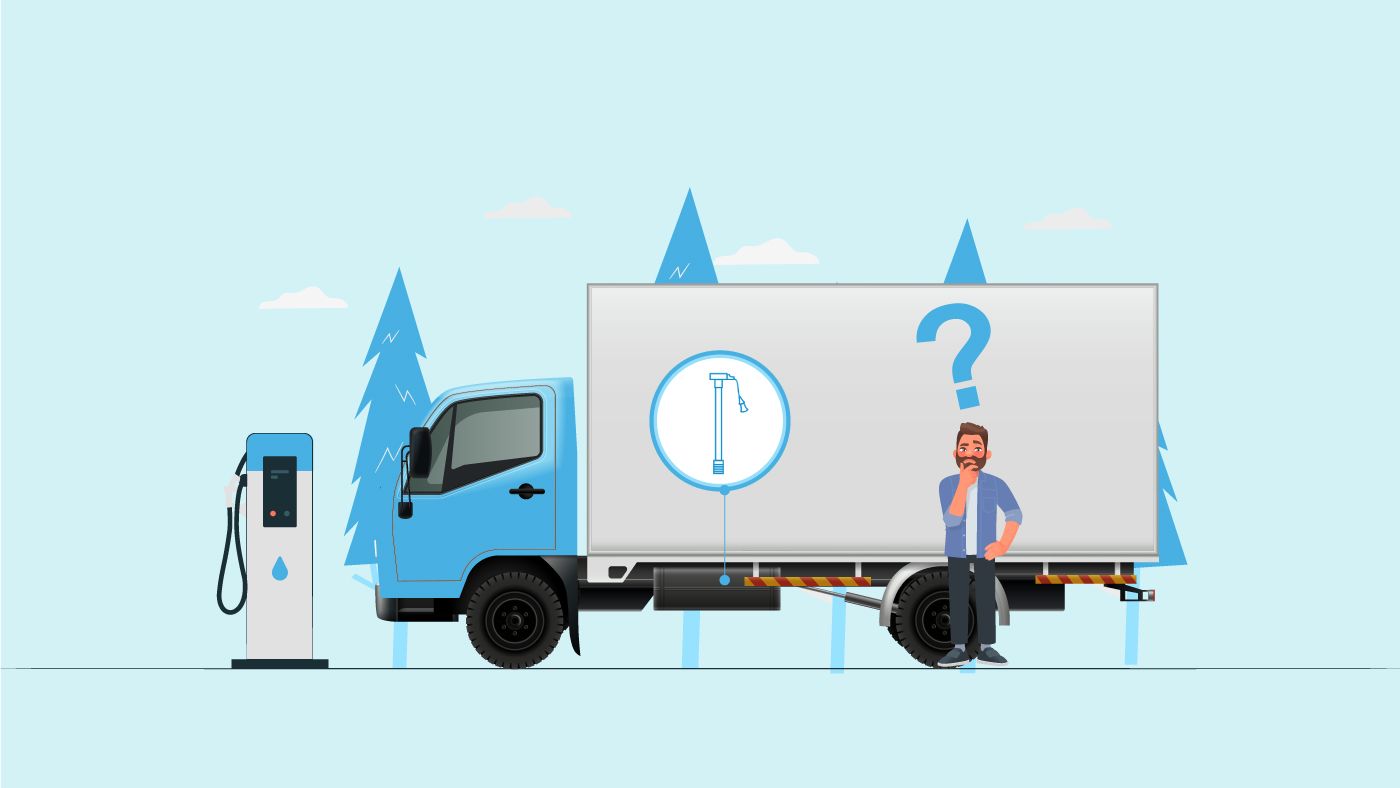
Our earlier article titled, ‘How to Choose the Right Fuel Sensor for Heavy Duty Fleet?’ We talked about why there is an urgent need for transporters and businesses to equip their fleet with fuel sensors to improve their operating efficiency and decrease fuel theft occurrences, among others. This piece addresses the most common problems businesses, and transporters face when equipping the right fuel sensor for their fleet. Moreover, we also suggest how businesses can ensure they get the right fuel sensor for their fleet.
A fuel level sensor (FLS) or fuel sensor is used by businesses and transporters to measure the current level of fuel in their tank and improve their fuel efficiency. Fuel accounts for up to 60% of the supply chain cost (Deccan Herald, 2021), and the recent fuel price hike in India has further pushed businesses to integrate their fleet with fuel sensors.
Benefits of using a fuel sensor
Modern fuel sensors are integrated with a telematics system to offer digital fuel information and the vehicle's location data. Integration of a telematics system with a fuel sensor can help businesses and transporters improve the fuel efficiency of their vehicle and curb instances of fuel theft and other malpractices through the availability of real-time location data. In addition to that, several fuel management systems.
How does a fuel sensor work?
Most modern fuel sensors nowadays connect to telematics devices installed in the vehicle. Since modern fuel sensors offer digital data, they are mostly connected to a telematics tracker via Digital Connection, - RS485 or RS232, using digital signals to transmit information. One can connect the fuel sensors to both the RS232 port and RS485 port. However, the RS485 port can connect multiple fuel sensors through it compared to only one provided by the RS232 port. The RS485 port is more suitable in the case of heavy-duty trucks or long-haul vehicles equipped with two tanks, primary and secondary. Connecting the fuel sensor through the RS485 port makes it possible to install fuel sensors in both the tanks to have a more accurate measurement of the fuel usage from the fuel tank.
Problems faced by businesses when installing fuel sensors
Ensuring compatibility when installing any hardware device into your vehicle is crucial for future upgrades and integration, where every add-on system can be mutually connected and provide essential insights. For example, we addressed how integrating a fuel management system and a telematics system can help businesses curb fuel theft and other malpractices.
Incompatibility issue with pre-installed telematics device
Businesses and transporters often face incompatibility issues when getting fuel sensors installed in their truck. The incompatibility results from their trucks already being pre-installed with a telematics device, which is incompatible with fuel sensors as they lack the RS232 or the RS485 ports necessary for fuel sensors using digital signals. Thus, it is crucial to install telematics devices which provide the required accessibility for future integration with other add-on hardware.
Inaccurate fuel measurement for trucks
Inaccurate fuel level measurement is also a recurring problem faced by several businesses and transporters. It could be challenging to pinpoint the exact cause of inaccurate measurement as it would vary from case to case. However, it is poor installation or an incompatible telematics device in most cases. As a result, it leads to fluctuations in voltage measurement, causing inaccuracy in data collection.
Fuel sensor for trucks with multiple fuel tanks
Lastly, heavy-duty trucks are equipped with a secondary fuel tank connected to the primary one. For the most accurate measurement of fuel levels, both the fuel tanks should ideally be integrated with fuel sensors which are possible only if the telematics device has an RS485 port which makes it possible to connect multiple fuel sensors to it. 70-80% of the transporters usually equip only the primary fuel tank with a fuel sensor that is adequate for basic fuel level information. However, if the problem of fuel theft is more frequent in such cases, it is advisable to install fuel sensors in both tanks for more accurate measurement.
What should businesses do to get the right fuel sensor installed?
There is a general lack of awareness when it comes to installing fuel sensors for trucks in India. Thus, to ensure accurate measurement of fuel levels which is crucial for precise fuel insights, businesses and transporters should equip their trucks with telematics device which provide Digital ports, namely RS232 and RS484, for integration with fuel sensors. Secondly, businesses should also assess their requirements when integrating their fleet with a fuel sensor based on the number of fuel tanks in their trucks. Lastly, it is also essential that the installation of the fuel sensor is appropriately done depending on the kind of fuel sensor installed.
We aimed to address the most common misconceptions associated with installing a fuel sensor for your truck through this article. In conclusion, one piece of advice we suggest to our clients is to enquire and opt for telematics devices that provide both RS232 and RS484 ports that make it possible for fuel sensors to be integrated well with your vehicle. Availability of compatible telematics devices for fuel sensors will make it possible for your vehicle to collect accurate fuel data needed for better fuel insights for businesses and transporters.
What is a common cause of fuel level sensor failures?
Sending unit failure is the most frequent reason for an inaccurate fuel gauge. The sending unit in your vehicle constantly rubs the variable resistor as it travels along the road. The contacts may therefore lose their effectiveness over time.
What is the fuel sensor?
A fuel sensor is a tool used to measure the precise amount of fuel in a vehicle's tanks. These measures reveal the the amount of fuel in a vehicle's tank. fuel usage on a daily basis.






